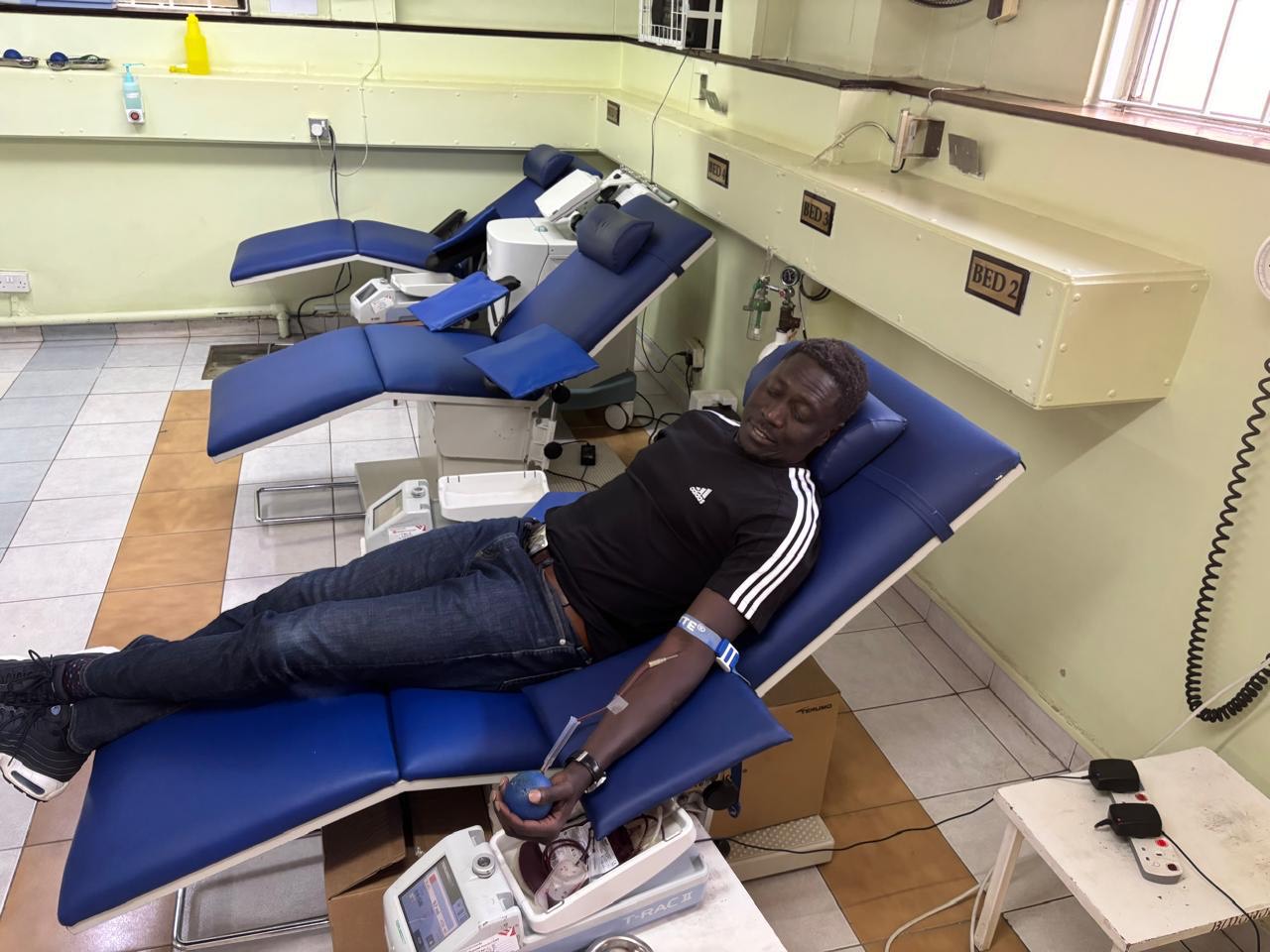In June, World Blood Donor Day highlights the urgent need for safe blood for patients in need of donations for various health emergencies or diseases. Across Sub-Saharan Africa, we call on our communities to prioritise giving the gift of blood. Each of us has the opportunity to become part of a lifesaving solution.
From maternity wards to trauma units, from children battling leukaemia to patients undergoing surgery, blood remains a critical and irreplaceable lifeline2. Blood saves lives. This is not a metaphor, but a biological truth. Still, in low-to-middle-income countries – many of which are in Africa – the life-saving power of blood is out of reach in many communities.
While global headlines often focus on pandemics or breakthrough therapies, the emergency of a safe blood supply continues to cost lives daily, and with minimal fanfare. According to WHO numbers, the median blood donation rate in high-income countries is 31.5 donations per 1,000 people, compared to 5.0 donations per 1,000 people in low-income countries1.
Having worked across both clinical and policy domains in Africa for over two decades, I’ve seen firsthand the value of lifesaving blood transfusions on patient outcomes. Every day, patients receive second chances because donors have given a little time, and innovative screening processes have ensured that the blood is free from dangerous infections.
Beyond quantity, safety is just as critical.
Screening for HIV, Hepatitis B, Hepatitis C, Syphilis, Chagas disease, Malaria and other diseases ensures patient safety and more hopeful medical outcomes3. This demands infrastructure, rigorous screening protocols, supply chain coordination and trained personnel. Diagnostics play a transformative role — enabling health systems to screen effectively, track reliably and act quickly.
In the healthcare industry, we have an opportunity to transform blood delivery systems across Africa. Some countries, like Rwanda, have embraced innovation, using drones to distribute screened blood to remote areas4. South Africa’s SANBS sets a powerful example of screening excellence5. These are signs of progress. But we need scale. We need consistency. And we need equity.
So, how do we deliver to more patients when they need it?
We start by redefining blood safety and supply as a public health investment. We build partnerships that embed diagnostics at every level of care. We equip local clinics and health workers with the tools and knowledge to screen, mobilise and act. We shift our narrative from one of scarcity to one of solidarity.
A tall order? Well, the progress we need may not happen overnight. Meaningful change never does. Change is a process that requires willingness and agility from its proponents.
In our current reality, global funding is shifting. Longstanding donors are reevaluating their priorities, and if Africa does not build its own resilience now, we will find ourselves more vulnerable in the next crisis than we were in the last.
Increasing domestic financing for health is now an inevitable reality. Robust Universal health insurance coverage, leveraging both public and private models are the way forward. Strengthening laboratory and diagnostic capacity must be a national priority. Strategically, it is a cost-efficient investment on the path to Universal Health Coverage (UHC).
Countries like Kenya are showing leadership by integrating disease screening into UHC pathways6 – a fantastic step in the direction of cost-effective deployment of our health budgets.
With respect to safe blood, there are opportunities to implement Nucleic Acid Testing (NAT) and serology testing solutions more widely in Africa to improve our stock levels and diminish deaths related to lack of safe blood.
To honour World Blood Donor Day 2025, let’s hail the heroes who give blood, and perhaps consider sharing some of our own. As healthcare businesses, policymakers and medical decision-makers, let’s challenge ourselves to ensure that their gift goes as far as it can go.
I call on all partners — public and private, local and global — to make a commitment. Let’s muster the political will, forge strategic partnerships and invest in the whole blood-donor chain, not just the collection point. Africa needs new blood, and we are the beating heart that will keep it flowing.
*Dr Allan Pamba, Executive Vice President, Diagnostics, Africa, at Roche Diagnostics

